World leading Japanese automotive supplier now introducing outstanding UVC technology with full value chain in-house from the wafer production to final assembled products


It is well known that UV-C light peaking at around 265 nm has highest disinfection efficiency against both bacteria and virus, because this wavelength range corresponds to the absorption peak of DNA/RNA. However, it becomes difficult to obtain high output power from AlGaN-based LEDs as the wavelength becomes shorter, especially below 270nm, because dislocations contained in the AlGaN layer decrease the internal quantum efficiency. Stanley has overcome this technical issue by using high quality AlN single crystal substrates fabricated by HexaTech. The AlN substrate allows us to grow AlGaN layers with very low dislocation density of about 104 cm-2, which is less than 1/1000 in AlGaN layer grown on sapphire substrate usually used for fabricating UV-C LEDs. In addition, our AlN substrate has superior UV transparency which suppress the absorption of UV light in the AlN substrates. This unique LED structure bring over 50mW output power of 265 nm LEDs. In-company sterilization test revealed that germicidal effectiveness against SARS-CoV-2 of 265 nm is 1.8 times higher than of 280nm and actual germicidal power of 265 nm LEDs is approximately 1.3 times higher than that of 280 nm LEDs. We hope that high germicidal power of 265 nm LED brings customer's benefit such as improved throughput and design flexibility of disinfection devices.

The graph on the left shows the relationship between UV sensitivity of DNA in living organisms and the emission wavelength of deep UV light sources. The higher the sensitivity to UV rays, the greater the damage received from UV rays. Stanley's UVC LED has an emission wavelength of 265nm, obtaining the maximum disinfection effect.
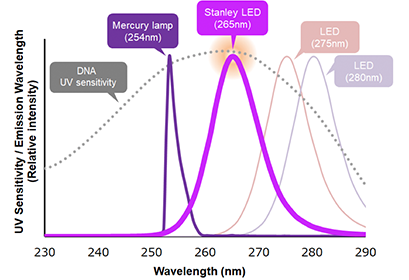
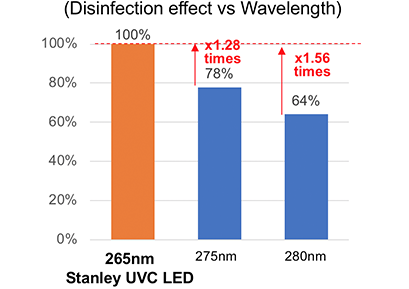
 Stanley's LED has a peak emission wavelength at 265nm, which maximizes the disinfection effect
Stanley's LED has a peak emission wavelength at 265nm, which maximizes the disinfection effect
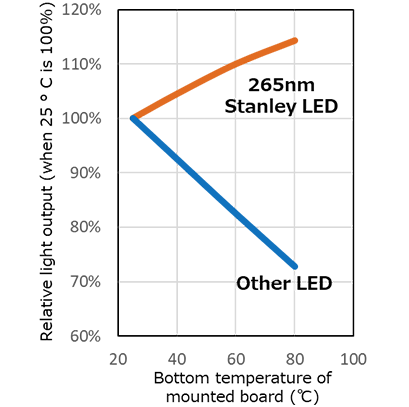
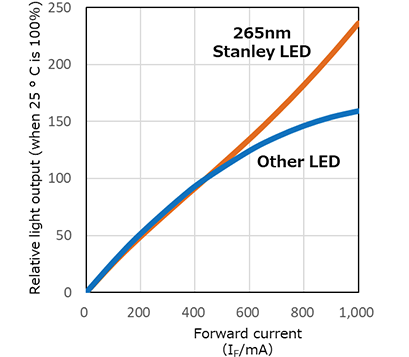
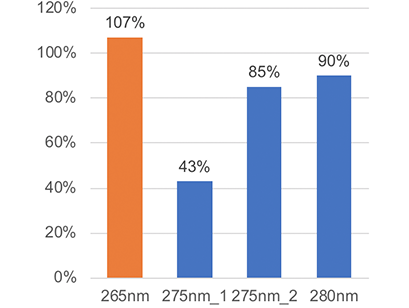
In comparison to other LED technology Stanley LED output power is raising with temperature. Customer takes benefit from superior temperature stability.
Stanley LED can stand much more current than comparable LEDs. Output power is only a matter of lifetime requirement.
Comparison of radiant flux at Tj=90°C from datasheet. While Stanley is 100% + α (easy to set up worst case), others are 100% - α (difficult to set up worst case).
 Outstanding temperature stability brings out the full potential under the actual usage situation
Outstanding temperature stability brings out the full potential under the actual usage situation
Unlike LEDs for lighting applications, UVC LEDs' light output (brightness) is not as important as their disinfection performance. Since UVC LEDs generate a large amount of heat, It is necessary to pay attention to their characteristics at high temperatures. Stanley designs LEDs for maximum disinfection performance when in use.
|LED performance listed on the datasheet|


|Important parameters when evaluating UVC light sources|
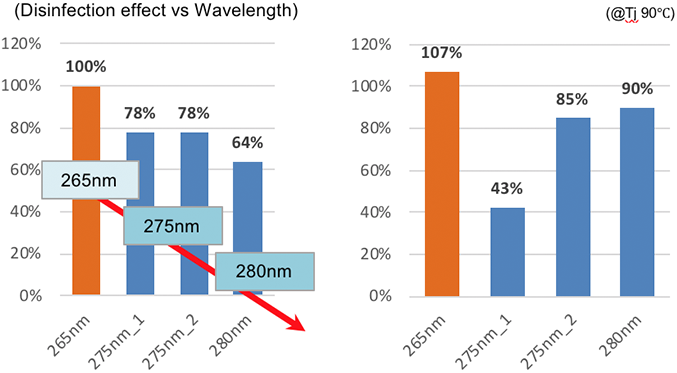
265nm: the most effective disinfection effect on microorganisms
LED output changes significantly under actual usage conditions

 Disinfection performance
Disinfection performance
Radiant flux (mW)
|True disinfection performance not listed on the datasheet|
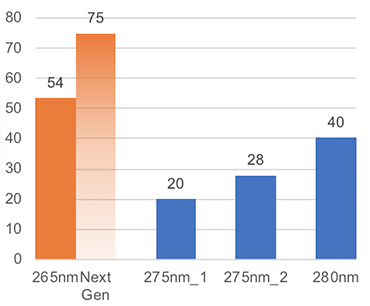
Stanley 265nm has the best disinfection performance
Based on the comparison on the previous page, we compared the time required for disinfection of the new coronavirus (SARS-CoV-2).
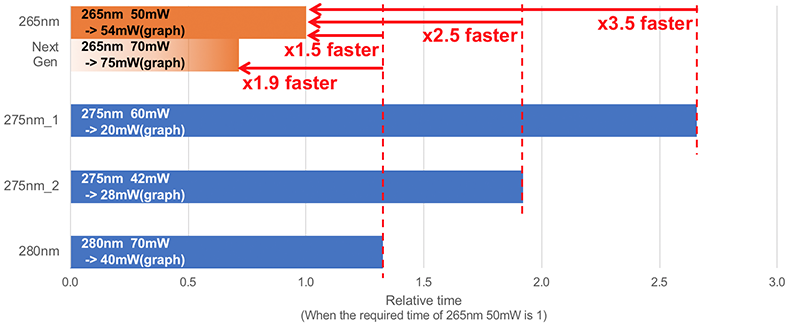
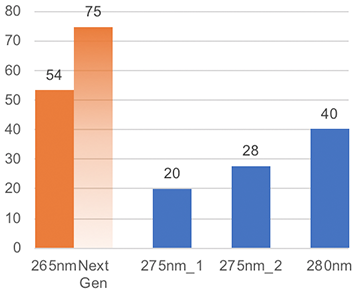
Stanley UVC LED achieves disinfection in shorter time.
 Disinfection performance
Radiant flux (mW)
Disinfection performance
Radiant flux (mW)
Prevents "sudden death" and "sudden output drop" due to humidity by shutting off the die from the influence of humidity contained in the surrounding air completely.
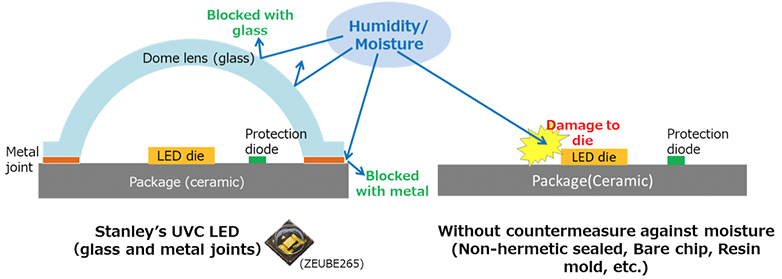
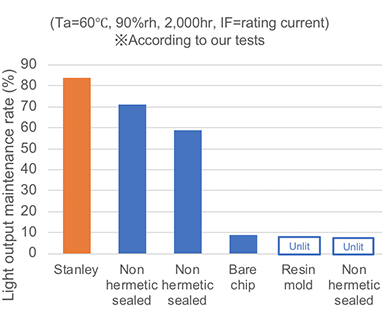
 Special package structure to protect the chip from humidity
Special package structure to protect the chip from humidity
We have achieved excellent long lifetime with our self-developed LED dies and packages.
Even taking into consideration the heat generated when illuminated, we achieved L70 10,000hr.
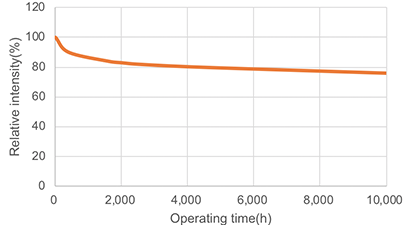
It achieves L70 10,000hr even in a high Tj state close to the actual usage conditions
 Superior lifetime
Superior lifetime
L70>10,000h
